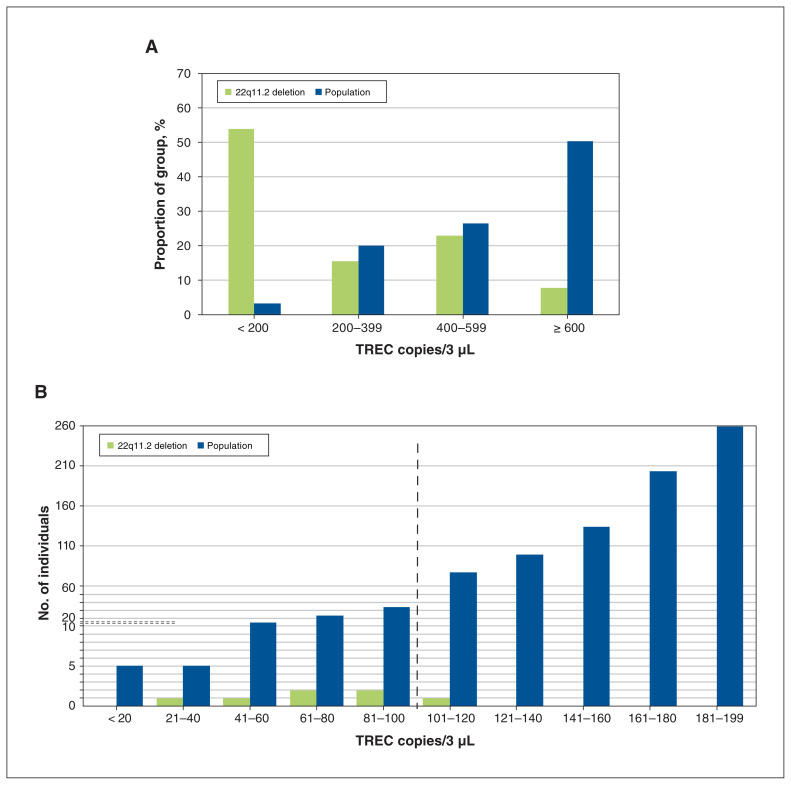Figure 2:
(A) Severe combined immunodeficiency screening results showing distribution of T-cell receptor excision circle (TREC) copies/3 μL for term singleton newborn screening samples, by 22q11.2 deletion status. For the term singleton subsample, the majority (7/13, 54%) of the 22q11.2 deletion group had fewer than 200 TREC copies/3 μL (about the 3rd percentile), whereas the greatest proportion of the remaining population-based group (13 297 [50%] of 26 435) had at least 600 TREC copies/3 μL. (B) Subset of term singleton newborn screening samples with lowest TREC values (< 200 copies/3 μL). Shown here are detailed distribution results for samples from the term singleton subsample. Overall, there were 859 with fewer than 200 TREC copies/3 μL, 7 with confirmed 22q11.2 deletion and 852 from the remaining population-based group. The dashed horizontal lines indicate where the scale changes for fine gradations: below 10, each mark on the y axis indicates 1 individual, and above 10, each mark on the y axis indicates 10 individuals. Six (46%) of the overall 13 term singleton samples with a confirmed 22q11.2 deletion had no more than 100 TREC copies/3 μL (to the left of the vertical dashed line), compared with 81 (0.3%) of the remaining population-based group (n = 26 435, p < 0.001). Currently, 100 TREC copies/3 μL is the cut-off in Ontario to undergo a secondary, more accurate TREC assay for final reporting of severe combined immunodeficiency identified by newborn screening.

